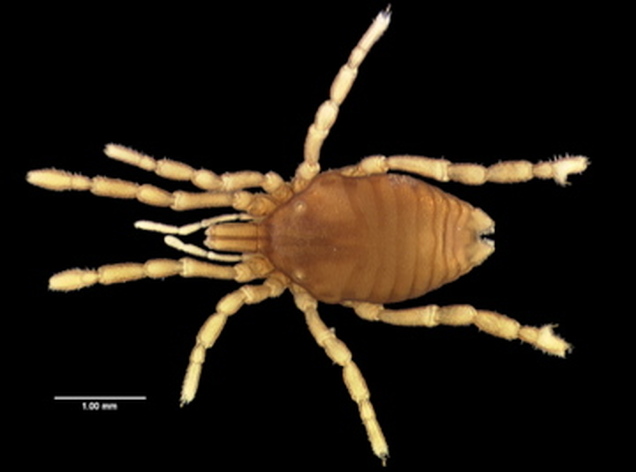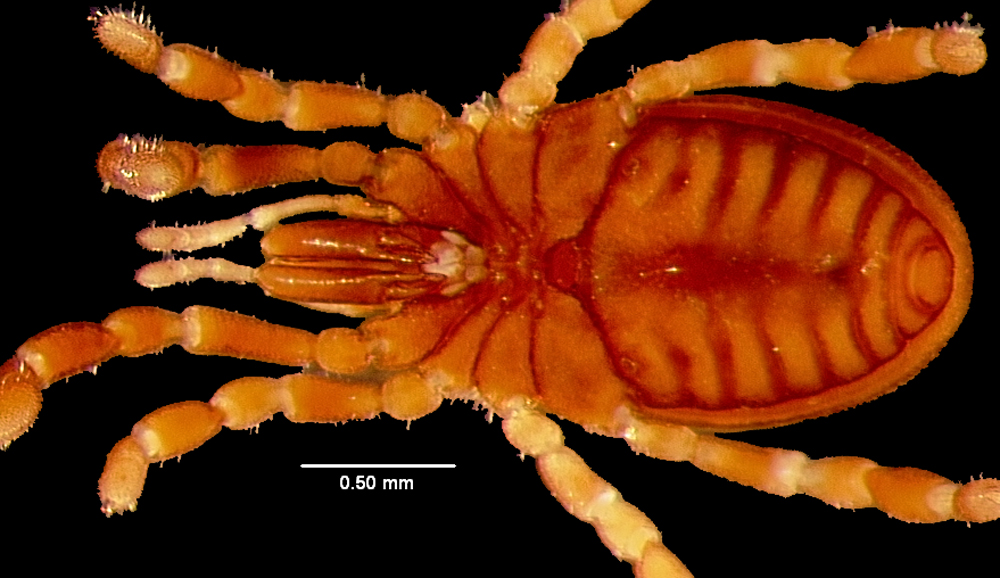Cyphophthalmi
Cyphophthalmi, commonly known as "mite harvestmen", is the suborder sister to the remaining Opiliones. This group is characterized by very limited dispersal and an ancient evolutionary history that stretches back to the Paleozoic.
I worked on Cyphophthalmi under the supervision of Prof. Sarah L. Boyer, previously a graduate student with my Ph.D. advisor, Prof. Gonzalo Giribet. These projects addressed the taxonomy of the Sri Lankan genus Pettalus and the New Caledonian family Troglosironidae.
For more on Cyphophthalmi diversity, kindly refer to the Cyphophthalmi checklist.
Pettalus
Arguably the most enigmatic genus of Cyphophthalmi, Pettalus occurs only in Sri Lanka. For over a century, only two species were known from this Indian Ocean island. Subsequent to a 2004 collecting expedition, two more species of Pettalus were described and many more were sequenced for a phylogeny of Cyphophthalmi. Shown below is the holotype of Pettalus lampetides, which was collected in Diyaluma Falls, Sri Lanka, in the 1970s and described in 2006.
I worked on Cyphophthalmi under the supervision of Prof. Sarah L. Boyer, previously a graduate student with my Ph.D. advisor, Prof. Gonzalo Giribet. These projects addressed the taxonomy of the Sri Lankan genus Pettalus and the New Caledonian family Troglosironidae.
For more on Cyphophthalmi diversity, kindly refer to the Cyphophthalmi checklist.
Pettalus
Arguably the most enigmatic genus of Cyphophthalmi, Pettalus occurs only in Sri Lanka. For over a century, only two species were known from this Indian Ocean island. Subsequent to a 2004 collecting expedition, two more species of Pettalus were described and many more were sequenced for a phylogeny of Cyphophthalmi. Shown below is the holotype of Pettalus lampetides, which was collected in Diyaluma Falls, Sri Lanka, in the 1970s and described in 2006.
For more information on the family Pettalidae, please refer to Prof. Boyer's website.
Troglosironidae
This enigmatic family occurs on New Caledonia, but is not related to Cyphophthalmi from nearby landmasses, such as Australia or New Zealand. It is the sister lineage to a much more diverse Western Gondwanan clade comprised of two families. Troglosironidae is an evolutionary relict: it has few extant species, an ancient origin estimated sometime in the Mesozoic, and is biogeographically restricted. Subsequent to taxonomic work, the number of described species stands at 13. Shown below is the holotype of Troglosiro longifossa, which was collected in Port Boise Bay, New Caledonia.


